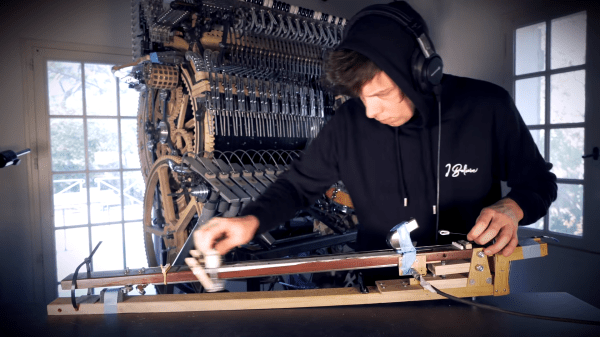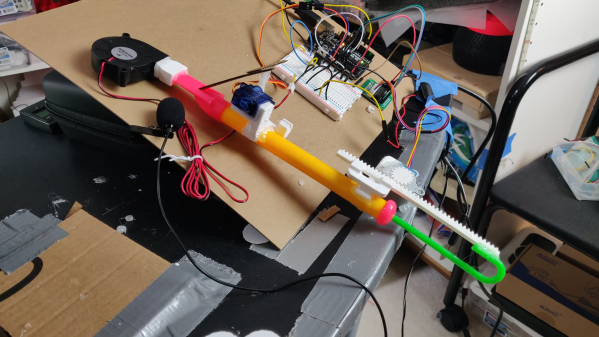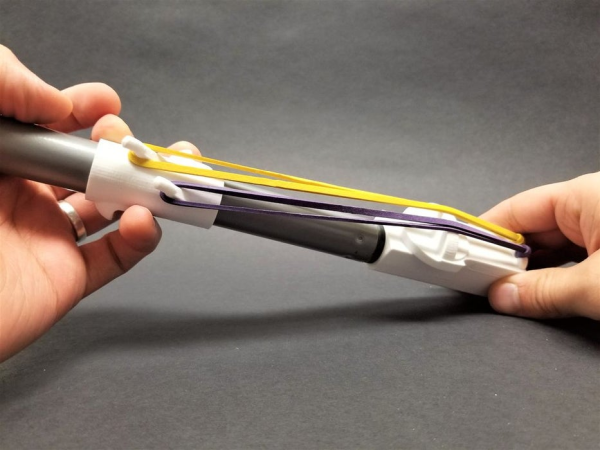Some humans are blessed with perfect pitch, an ability that comes in handy when pursuing the musical arts. For many others though, a little help is often appreciated. A pitch pipe is a handy way to find the starting note of a performance, and [Isaac] decided to build his own in the digital realm.
The project is based on the Adafruit Circuit Playground express, which packs in all the peripherals needed right on board. The buttons are used to select the pitch required, with the LEDs used to display the selected note. Blue means flat, green means natural, and red means sharp. A 3D printed outer ring is clipped on to the board to denote the pitches for the user. To play the note, the user simply blows on the pitch pipe. The onboard MEMS microphone detects this and plays the note on the onboard speaker.
It’s a tidy little project that is a great way to get one’s feet wet with embedded programming and working with audio. We’ve seen the Circuit Express pop up before too, such as in this pizza-box DJ mixer. Video after the break.
Continue reading “A Digital Pitch Pipe Gets You In Tune”


















